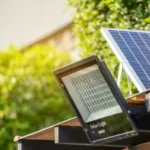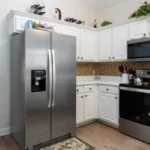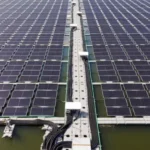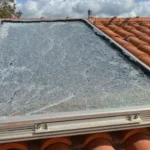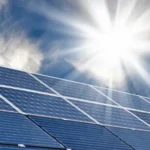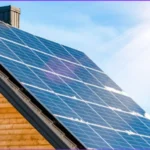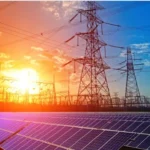Have you ever walked into your backyard at night and thought, “Why isn’t there a light here?” but then dreaded the idea of running wires or paying extra on your electric bill? That is precisely where solar motion sensor lights come in, and they are only the beginning of what solar energy can do for your home.
In this guide, we will explore not just these lights, but how they fit into a broader solar strategy for homeowners, eco-conscious families, and small businesses. We will cover real-world performance factors, care tips that can save you 10–20% in output, and insider advice from my years working alongside solar installers and maintenance crews.
Also visit this page : solar refrigator.

Why Solar Motion Sensor Lights Are More Than Just Convenient
Solar sensor lights are not only about convenience. They are a low-maintenance, zero-electricity-cost solution for improving safety and security.
I once had a client, a small café owner in Tucson, who installed six of them in her parking lot. She was skeptical about brightness at first, but a year later she reported fewer customer complaints about dark areas, and she had not replaced a single bulb or paid a cent in extra energy costs.
Key Benefits:
- No wiring required, making them perfect for sheds, driveways, and rural properties
- Security boost, since sudden light deters trespassers and wildlife
- No electricity bill impact, because they are powered entirely by the sun
- Low maintenance, with occasional cleaning to keep them at peak brightness
Pro Tip: Choose models with at least a 2,000-lumen rating and an adjustable detection range of 20–30 feet. Anything less might disappoint you.
Understanding Solar Panel Performance in Real-World Conditions
While lights are a great entry point into solar, homeowners investing in rooftop or ground-mount systems should know how real-world factors affect performance.
The Dirt Factor — Why Cleaning Matters
Panels that look “mostly clean” can still be losing up to 20% of output from dust, pollen, or bird droppings. I once measured a 6 kW array before and after a basic rinse, and the output jumped from 4.8 kW to 5.7 kW within minutes.
Quick Cleaning Checklist:
- Use a soft brush or sponge with non-abrasive soap
- Rinse with a garden hose (avoid high-pressure washers)
- Clean early morning or late evening to prevent glass cracking from temperature shock
For smaller solar devices like solar motion sensor lights, a quick wipe with a damp cloth every month can restore full brightness.
Also click here : solar power outage.
Smart Inverters & Battery Storage: Getting the Most From Your Energy
If your solar system includes battery storage or an EV charger, your inverter is the unsung hero.
Smart inverters allow you to:
- Monitor system performance in real time
- Feed excess energy into the grid during peak prices
- Prioritize critical loads during outages
Troubleshooting Common Inverter Issues
- Sudden shutdowns: Check breaker position, then review your inverter’s fault code
- Underperformance: Look for shading changes such as growing trees or new structures
- Wi-Fi connectivity loss: Restart router and inverter, and if unresolved, update firmware

Solar EV Charging — The Future Is Here
Pairing home solar with an electric vehicle is a game changer. I recently worked with a family in Sacramento who installed a 7.2 kW Level 2 charger connected to their rooftop array. By programming charging sessions for midday, when panels produced the most, they reduced their reliance on grid electricity by over 80%.
What to Look for in a Solar EV Charger:
- Adjustable amperage to help avoid tripping circuits
- Scheduling capability
- Compatibility with your inverter brand
Off-Grid Solar: The Ultimate Independence
Going fully off-grid is not for everyone, but for rural homeowners or those wanting complete energy independence, it can be life-changing.
Essentials for a Reliable Off-Grid Setup:
- High-capacity battery bank (lithium-ion preferred)
- Oversized solar array to account for cloudy days
- Backup generator for emergencies
- Energy-efficient appliances to stretch stored power
Even small off-grid setups benefit from solar motion sensor lights, since they provide security lighting without draining your main battery bank.
Solar ROI: What You Can Expect
Many homeowners ask, “How long until my system pays for itself?”
The answer varies by location, electricity rates, and incentives, but here is a rough breakdown:
Example ROI Calculation:
- System size: 6 kW
- Cost after incentives: $12,000
- Annual savings: $1,400
- Payback period: approximately 8.5 years
Since panels last 25 years or more, that is over 16 years of free electricity after break-even.
Common Mistakes to Avoid in Solar Installations
- Ignoring shading analysis, even partial shading can cut production by 50% on affected panels
- Skipping permits, which can cause headaches when selling your home
- Not planning for future upgrades like battery storage or an EV charger
- Buying the cheapest components, especially with solar motion sensor lights, as low-quality LEDs fade fast

Maintenance: Protecting Your Investment
Solar is low-maintenance, but not maintenance-free.
Annual Tasks:
- Check mounting hardware for corrosion or looseness
- Trim nearby trees
- Review inverter data for unusual drops in output
Every 3–6 Months:
- Clean panels and solar sensor lights
- Inspect wiring for wear or animal damage
Balancing Benefits & Limitations
It is easy to get swept up in the “free energy” idea, but here is the honest breakdown:
Benefits:
- Lower bills
- Reduced carbon footprint
- Energy independence
Limitations:
- Upfront cost
- Performance drops in cloudy or winter conditions
- Maintenance still required
Final Thoughts: Lighting the Path Forward
Whether you are installing a full rooftop array or simply adding solar motion sensor lights to your driveway, the principles of solar success are the same:
- Choose quality components
- Keep them clean
- Monitor performance
If your panels or lights have not been cleaned in over three months, you could be losing 10–20% of your energy output. Book a solar system checkup today and start maximizing your solar investment.


